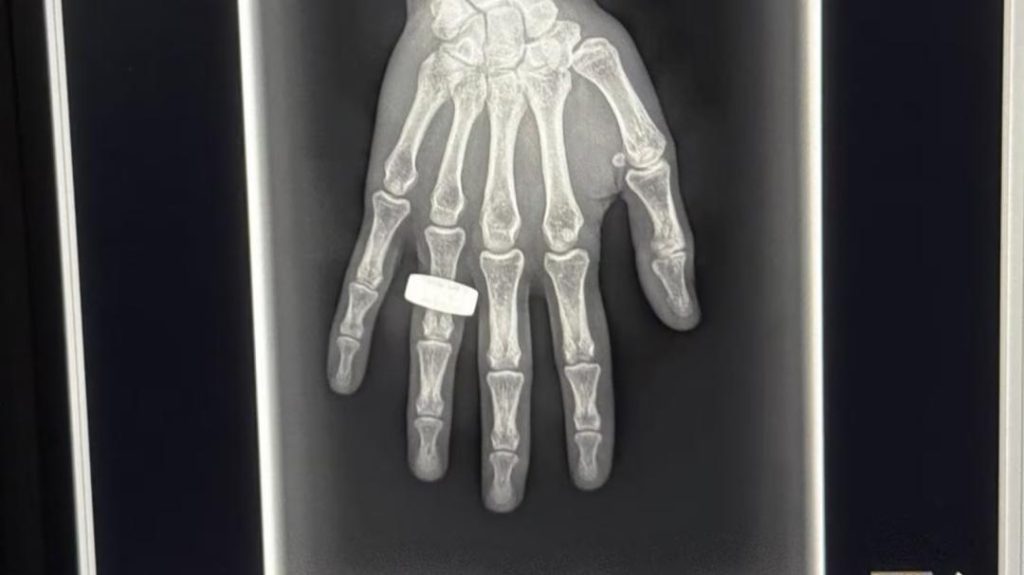
First-ever human X-ray taken in space
In a groundbreaking achievement, SpaceX’s recent private Fram2 mission has made history by capturing the first-ever X-ray image of a human in space. The X-ray, which was taken on board the SpaceX Crew Dragon spacecraft, recreates the very first X-ray image captured in 1895 by German physicist Wilhelm Conrad Röntgen. The X-ray image shows a hand wearing a ring, a nod to the original X-ray image that marked the beginning of a new era in medical imaging.
The Fram2 mission, which was launched on March 3, 2023, carried four space tourists to orbit the north and south poles of the Earth. The mission, which was designed to test the capabilities of SpaceX’s Crew Dragon spacecraft for private missions, also included a series of scientific experiments and demonstrations. The X-ray experiment, which was conducted by a team of scientists from the University of California, Los Angeles (UCLA), was one of the most significant and exciting aspects of the mission.
The X-ray image was captured using a specialized X-ray machine that was designed to generate high-energy X-rays. The machine, which was built by a team of researchers from UCLA, was installed on board the Crew Dragon spacecraft before launch. During the mission, the X-ray machine was activated and aimed at the hand of one of the space tourists, who was wearing a ring on his finger.
The resulting X-ray image, which was captured in just a few seconds, shows a clear image of the hand and the ring. The image is not only a technological achievement, but also a testament to the power of X-ray imaging technology. X-ray imaging has revolutionized the field of medicine, allowing doctors to non-invasively visualize the internal structures of the body. The technology has also been used in a wide range of industrial and scientific applications, from quality control to materials science.
The Fram2 mission marks a significant milestone in the development of X-ray imaging technology. The mission demonstrates the capabilities of X-ray imaging in space, and opens up new possibilities for the use of X-ray imaging in future space missions. The mission also highlights the potential for private space companies like SpaceX to play a key role in advancing scientific research and exploration.
The Fram2 mission was not only a technological achievement, but also a unique and exciting experience for the four space tourists who flew on board the Crew Dragon spacecraft. The tourists, who were chosen from a pool of applicants, spent several days in space, orbiting the north and south poles of the Earth. During their time in space, they participated in a series of scientific experiments and demonstrations, including the X-ray experiment.
The Fram2 mission is just the latest example of SpaceX’s commitment to advancing scientific research and exploration. The company, which was founded by Elon Musk in 2002, has established itself as a leader in the private space industry, with a range of successful missions and technologies under its belt. From the development of the Falcon 9 rocket to the creation of the Crew Dragon spacecraft, SpaceX has consistently pushed the boundaries of what is possible in space.
In conclusion, the Fram2 mission marks a significant milestone in the development of X-ray imaging technology, and demonstrates the capabilities of X-ray imaging in space. The mission is a testament to the power of X-ray imaging technology, and highlights the potential for private space companies like SpaceX to play a key role in advancing scientific research and exploration.
Source:






